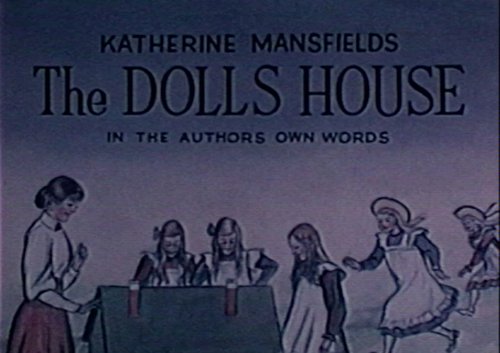
"Poor dears in the lane"
Katherine Mansfield's cutting descriptions of class-conscious Edwardian Wellington were inspired by her childhood, growing up in the upper-middle-class Beauchamp family. However, her sisters Vera, Chaddie and Jeanne vehemently denied that they were literal depictions, insisting the Burnell family members (described in Katherine's Wellington stories such as The Garden Party), were not accurate portraits of their parents.
In this excerpt from a 1962 radio interview, the three elderly sisters look back on their childhood and recall that although the family employed servants, they were regarded as friends by the Beauchamp children. They claim these memories were 'embroidered' by Mansfield to make 'good copy' for her short stories.
Listen to the full 1962 interview The Sisters of Kezia.
Collection reference 24160
Year 1962
Credits Owen Leeming interviewer, producer; Jeanne Renshaw interviewee; Charlotte Pickthall interviewee, Vera Bell interviewee
The Doll's House - in the Author's Own Words
Film maker Rudall Hayward illustrates The Doll's House using local actors and the author's own words for the narration.
Born in 1900, Rudall Hayward is the best known of the first generation of New Zealand film makers. He began working in cinema as a 9-year-old and made his first film in 1921. The Doll's House was produced on 16mm film and was intended to be the first in a series of adaptations of Katherine Mansfield stories, but it was not well received and the idea for a series was dropped. It turned out to be Hayward's last film, he died the following year in 1974.
Collection reference F15950
Year 1973
Credits Director: Rudall Hayward; Camera: Ramai Hayward
Ask to use this item, get more information or save it to My list.
Sumurun
In 2013, nearly 90 years after the death of Katherine Mansfield, a previously unknown story, Sumurun: an Impression of Leopoldine Konstantin was discovered by Mansfield scholar, Dr Gerri Kimbler. The story was among papers acquired by the Alexander Turnbull Library from the John Middleton Murry estate.
The story is likely to have been written in 1910 or 1911, and is based on Max Reinhardt’s play of the same name. Konstantin was the star and it’s probable that Mansfield was inspired by the play.
Read more about this remarkable discovery.
Collection reference P426839
Year 2013
Credits Reporter: Rebecca Edwards
Kate's Spotify playlist
Katherine Mansfield's young brother-in-law Richard Murry recalled he used to accompany her to music halls and theatres in London to see her favourite artists, singers such as Vesta Victoria, Marie Lloyd and Raquel Meller. He noted that Meller was a particular favourite of Mansfield's. So who were these artists? And if she were alive today, what would KM's Spotify playlist have sounded like?
Use the Spotify preview window below to listen to excerpts of Katherine Mansfield’s favourite artists or – if you have an account – listen to the full playlist on Spotify.
Kate's Spotify Playlist
Fortunately, recordings of all three women still exist, originally recorded on either Edison phonograph cylinders or early 78 rpm discs. Of the three, the best known today is Marie Lloyd – the Queen of British music hall for over 40 years. She was famous for her saucy songs, full of sexual innuendo and double entendre. Mansfield probably felt she was something of a kindred spirit, as both women encountered social criticism because of their liberated sexuality.
Vesta Victoria was another vaudeville and music-hall favourite on both sides of the Atlantic, best known for hits such as Daddy Wouldn't buy me a Bow-Wow and Waiting at the Church.
The glamorous Raquel Meller was a Spanish star who must have appealed to Mansfield's taste for the exotic and bohemian. Although she sang in Spanish, Meller had a great following in the English-speaking world with her passionate and sometimes risque songs in the "cuple" style, which was a predecessor of cabaret artists such as Edith Piaf.
To hear a sample of KM's musical tastes, click on the Spotify link – or to hear her favourite, listen to Raquel Meller sing her hit La Violetera (The Violet Seller - Jose Padilla, 1914)
Year C1918-1922
Credits Marie Lloyd, performer; Vesta Victoria, performer; Raquel Meller, performer